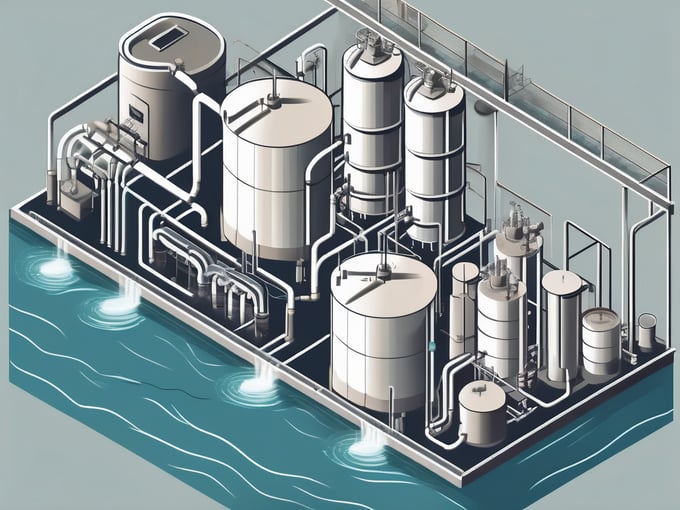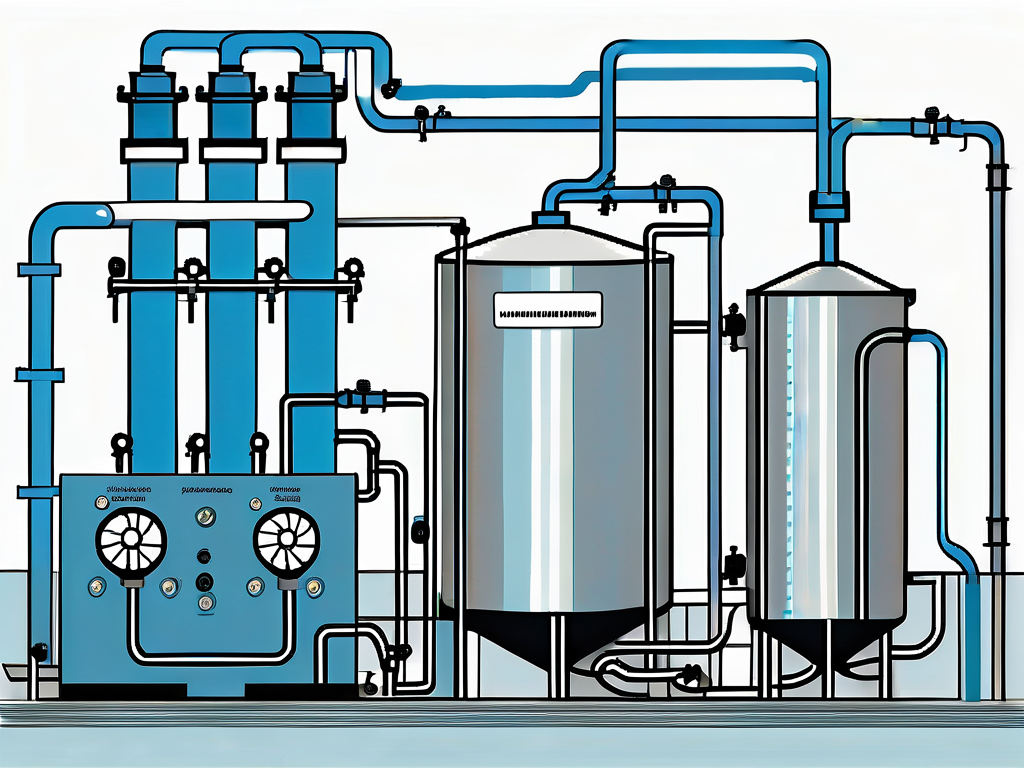
Hydraulic Loading Rate: Wastewater Treatment Explained
The hydraulic loading rate is a critical parameter in the design and operation of wastewater treatment facilities. It refers to the volume of wastewater that a treatment facility can process in a given period. This rate is typically expressed in terms of volume per unit area per unit time, such as cubic meters per square meter per day (m3/m2/day). The hydraulic loading rate is a key determinant of the efficiency and effectiveness of wastewater treatment processes.
Understanding the hydraulic loading rate is essential for engineers and operators of wastewater treatment plants. It helps them to design and operate the facilities in a way that ensures the effective removal of pollutants from the wastewater, while also minimizing the environmental impact of the treatment process. This article provides a comprehensive and detailed explanation of the hydraulic loading rate and its role in wastewater treatment.
Concept of Hydraulic Loading Rate
The concept of hydraulic loading rate is rooted in the principles of fluid dynamics and mass transfer. It is based on the idea that the rate at which wastewater is introduced into a treatment facility has a direct impact on the efficiency of the treatment process. A high hydraulic loading rate can overwhelm the treatment facility, leading to incomplete treatment of the wastewater and the discharge of pollutants into the environment.

On the other hand, a low hydraulic loading rate can result in under-utilization of the treatment facility, leading to higher operational costs and inefficiencies. Therefore, it is important to maintain an optimal hydraulic loading rate that balances the need for effective wastewater treatment with the operational efficiency of the treatment facility.
Calculation of Hydraulic Loading Rate
The hydraulic loading rate is calculated by dividing the volume of wastewater that is processed by the treatment facility in a given period by the surface area of the treatment facility. The surface area refers to the area of the treatment facility that is in contact with the wastewater, such as the surface area of a sedimentation tank or a biological reactor.
The calculation of the hydraulic loading rate is an important step in the design of wastewater treatment facilities. It helps to determine the size and configuration of the treatment units, as well as the flow rate of the wastewater through the facility. The hydraulic loading rate also provides a benchmark for monitoring the performance of the treatment facility and identifying any operational issues that may arise.
Factors Influencing Hydraulic Loading Rate
Several factors can influence the hydraulic loading rate of a wastewater treatment facility. These include the volume and characteristics of the wastewater, the design and operation of the treatment facility, and the environmental conditions.
The volume and characteristics of the wastewater can vary depending on the source of the wastewater and the activities that generate it. For example, industrial wastewater may have a higher hydraulic loading rate than domestic wastewater due to the higher volume and concentration of pollutants. The design and operation of the treatment facility can also affect the hydraulic loading rate. For instance, a treatment facility with a large surface area can accommodate a higher hydraulic loading rate than a facility with a small surface area. Finally, environmental conditions such as temperature and rainfall can influence the hydraulic loading rate by affecting the volume and flow rate of the wastewater.
Role of Hydraulic Loading Rate in Wastewater Treatment
The hydraulic loading rate plays a crucial role in the treatment of wastewater. It affects the efficiency of the treatment processes, the quality of the treated wastewater, and the operational performance of the treatment facility.
The hydraulic loading rate influences the efficiency of the treatment processes by determining the residence time of the wastewater in the treatment units. The residence time is the period during which the wastewater is in contact with the treatment media, such as the sedimentation particles or the biological organisms. A high hydraulic loading rate can reduce the residence time, leading to incomplete treatment of the wastewater. Conversely, a low hydraulic loading rate can increase the residence time, leading to over-treatment of the wastewater and unnecessary energy consumption.
Impact on Treated Wastewater Quality
The quality of the treated wastewater is directly related to the hydraulic loading rate. If the hydraulic loading rate is too high, the treatment processes may not be able to effectively remove all the pollutants from the wastewater, resulting in poor quality treated wastewater. This can have serious environmental consequences, as the discharge of poor quality treated wastewater can contaminate water bodies and harm aquatic life.
On the other hand, if the hydraulic loading rate is too low, the treatment processes may become inefficient, leading to unnecessary energy consumption and higher operational costs. Therefore, maintaining an optimal hydraulic loading rate is crucial for ensuring the quality of the treated wastewater and the efficiency of the treatment processes.
Operational Performance of Treatment Facility
The hydraulic loading rate also affects the operational performance of the wastewater treatment facility. A high hydraulic loading rate can strain the treatment units, leading to wear and tear and increased maintenance requirements. It can also result in the overflow of the treatment units, causing operational disruptions and potential environmental hazards.
Conversely, a low hydraulic loading rate can lead to under-utilization of the treatment units, resulting in inefficiencies and higher operational costs. Therefore, managing the hydraulic loading rate is an important aspect of the operation and maintenance of wastewater treatment facilities.
Managing Hydraulic Loading Rate in Wastewater Treatment
Managing the hydraulic loading rate in wastewater treatment involves a combination of design considerations, operational strategies, and monitoring techniques. The goal is to maintain an optimal hydraulic loading rate that ensures the effective treatment of wastewater, while also maximizing the operational efficiency of the treatment facility.
Design considerations include the size and configuration of the treatment units, the flow rate of the wastewater, and the characteristics of the wastewater. Operational strategies involve adjusting the flow rate of the wastewater, controlling the residence time of the wastewater in the treatment units, and managing the operational parameters of the treatment processes. Monitoring techniques include measuring the flow rate of the wastewater, monitoring the performance of the treatment processes, and assessing the quality of the treated wastewater.
Design Considerations
The design of the wastewater treatment facility plays a crucial role in managing the hydraulic loading rate. The size and configuration of the treatment units should be designed to accommodate the expected hydraulic loading rate. This involves considering the volume and characteristics of the wastewater, the desired quality of the treated wastewater, and the environmental conditions.
The flow rate of the wastewater should be designed to match the hydraulic loading rate of the treatment units. This involves considering the volume and flow rate of the wastewater, the residence time of the wastewater in the treatment units, and the operational parameters of the treatment processes. The characteristics of the wastewater, such as the concentration and type of pollutants, should also be taken into account in the design of the treatment facility.
Operational Strategies
Operational strategies for managing the hydraulic loading rate involve adjusting the flow rate of the wastewater, controlling the residence time of the wastewater in the treatment units, and managing the operational parameters of the treatment processes. Adjusting the flow rate of the wastewater can be achieved by using control valves or pumps. Controlling the residence time of the wastewater involves managing the flow rate and the size of the treatment units.
Managing the operational parameters of the treatment processes involves adjusting the conditions of the treatment processes to optimize the removal of pollutants. This can include adjusting the temperature, pH, and oxygen levels in the treatment units, as well as managing the population of biological organisms used in the treatment processes.
Monitoring Techniques
Monitoring techniques for managing the hydraulic loading rate involve measuring the flow rate of the wastewater, monitoring the performance of the treatment processes, and assessing the quality of the treated wastewater. Measuring the flow rate of the wastewater can be done using flow meters or other measurement devices. Monitoring the performance of the treatment processes involves tracking the removal of pollutants and the operational parameters of the treatment processes.
Assessing the quality of the treated wastewater involves testing the wastewater for the presence of pollutants and comparing the results with regulatory standards or guidelines. This can help to identify any issues with the treatment processes and to make necessary adjustments to the hydraulic loading rate.
Conclusion
The hydraulic loading rate is a critical parameter in wastewater treatment. It affects the efficiency of the treatment processes, the quality of the treated wastewater, and the operational performance of the treatment facility. Understanding and managing the hydraulic loading rate is essential for the effective and efficient treatment of wastewater.

This article has provided a comprehensive and detailed explanation of the hydraulic loading rate and its role in wastewater treatment. It has covered the concept and calculation of the hydraulic loading rate, the factors influencing the hydraulic loading rate, the role of the hydraulic loading rate in wastewater treatment, and the strategies for managing the hydraulic loading rate. It is hoped that this information will be useful for engineers and operators of wastewater treatment facilities, as well as for students and researchers in the field of environmental engineering and science.



